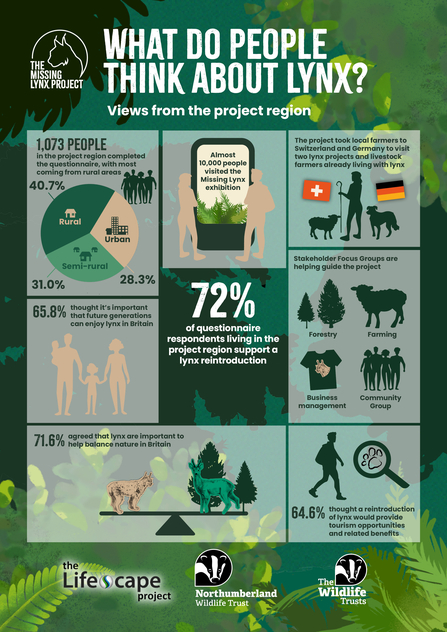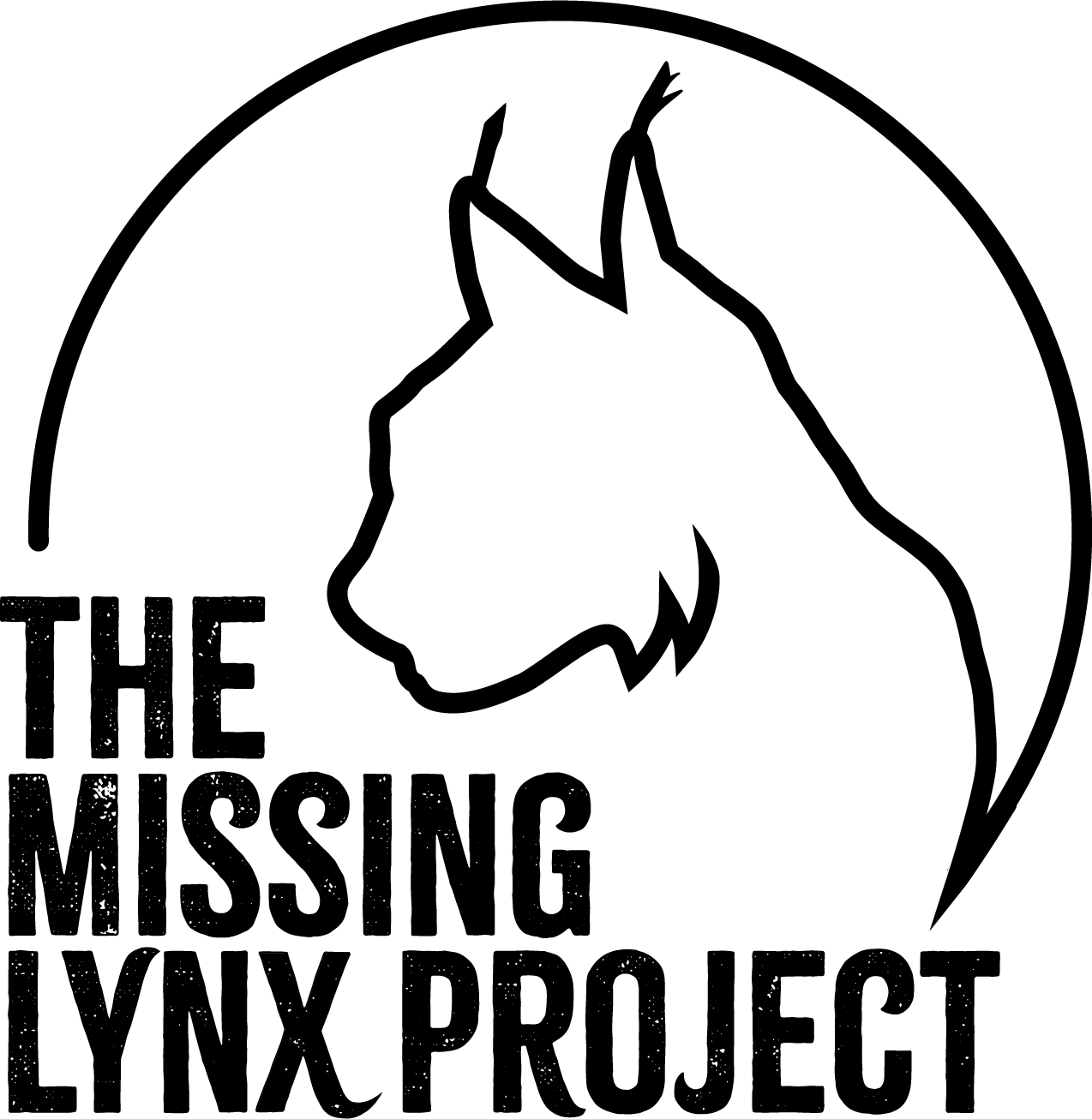The Missing Lynx Project’s research found that if lynx were to be released in Northumberland, they could grow into a healthy population covering north-west Northumberland, the edge of Cumbria and the bordering areas of southern Scotland. But a lynx reintroduction could only take place if local people are accepting of the animal back in the landscape.
We have been sharing our research with people and communities in the area, discussing lynx and giving everyone the chance to share their views. We welcomed almost 10,000 people to our travelling Missing Lynx exhibition, held more than 100 stakeholder meetings and one-to-one interviews, and created questionnaires to record views on lynx reintroduction.
The questionnaire for individuals received more than 1,000 responses from people in the project region, with 72% supporting the reintroduction of lynx.

We’ve produced an interim report of the key findings from these questionnaires. This will be followed by a comprehensive peer-reviewed document.
Focus groups
We facilitated the creation of several focus groups for members of the community, including farming focus groups. Members of the farmer focus groups, along with some of the wider farming community, were offered the opportunity to visit Europe, to learn more about lynx and talk to farmers that live and work alongside them.
The next steps
The Missing Lynx Project partnership is working with local communities to consider how a reintroduction project could be managed to maximise benefits and reduce risks. The partnership hopes to apply for a licence to reintroduce lynx to north-west Northumberland once we have a plan collaboratively designed with local people which sets out measures that are acceptable, feasible and can be implemented
We’re also sharing a new questionnaire more widely, to gather views on lynx and their reintroduction from across the UK. This will give us a better understanding of how the nation feels about the idea of bringing lynx back.

